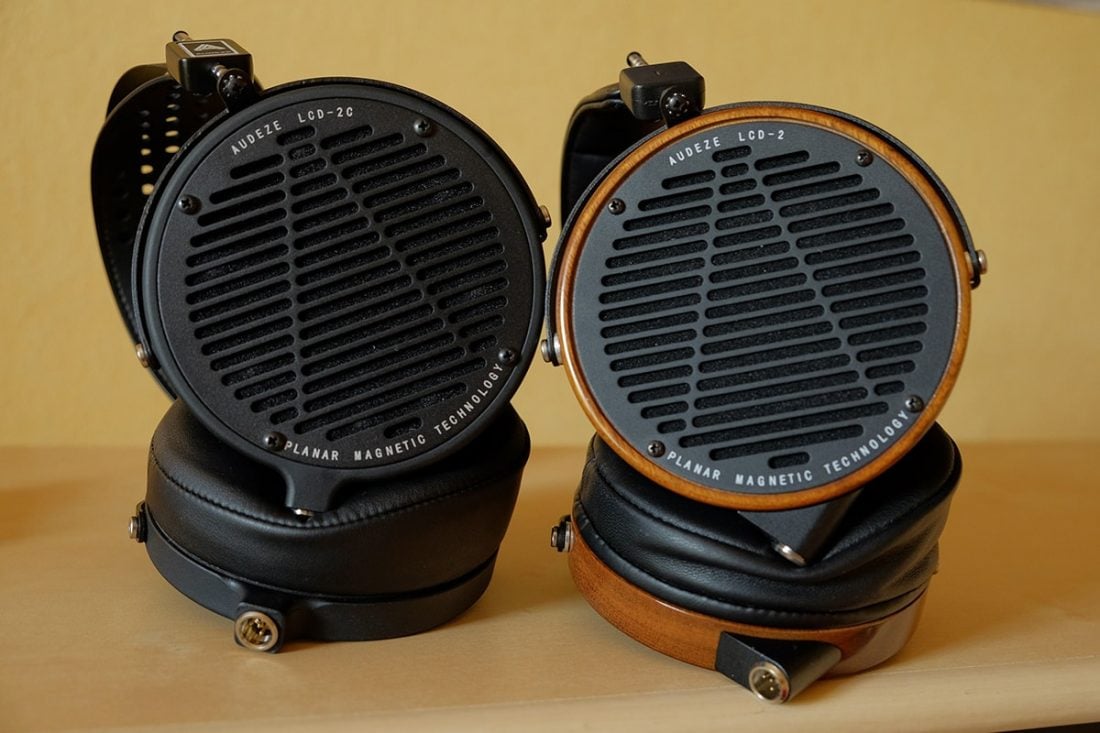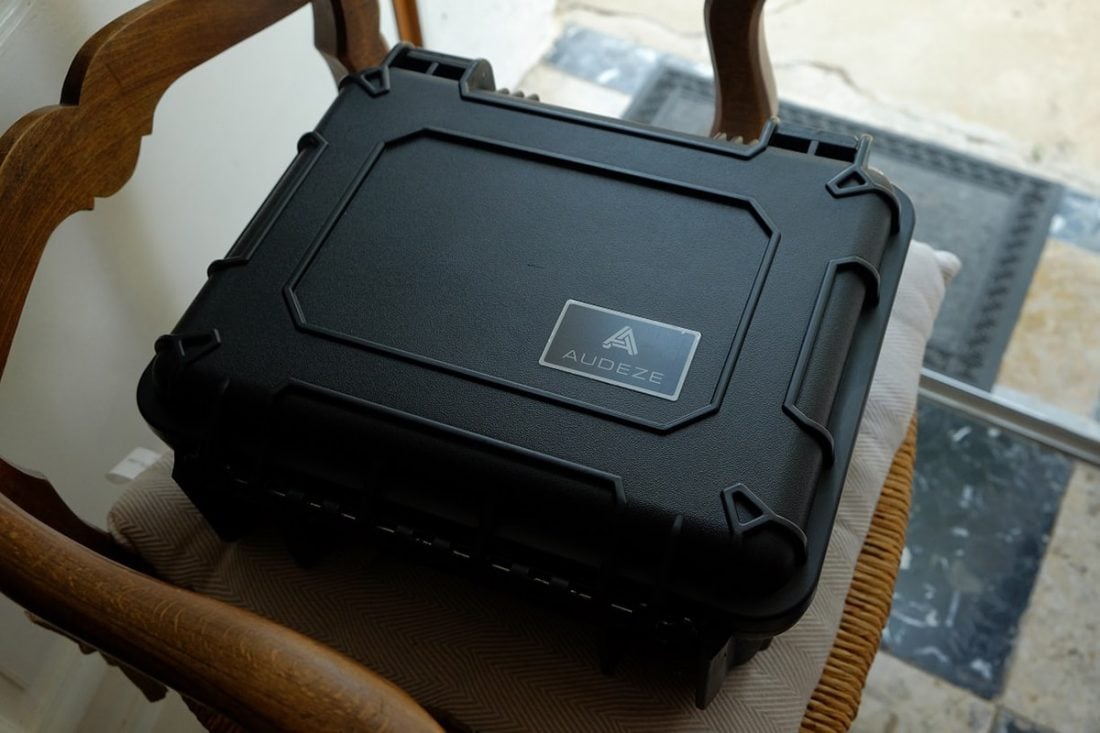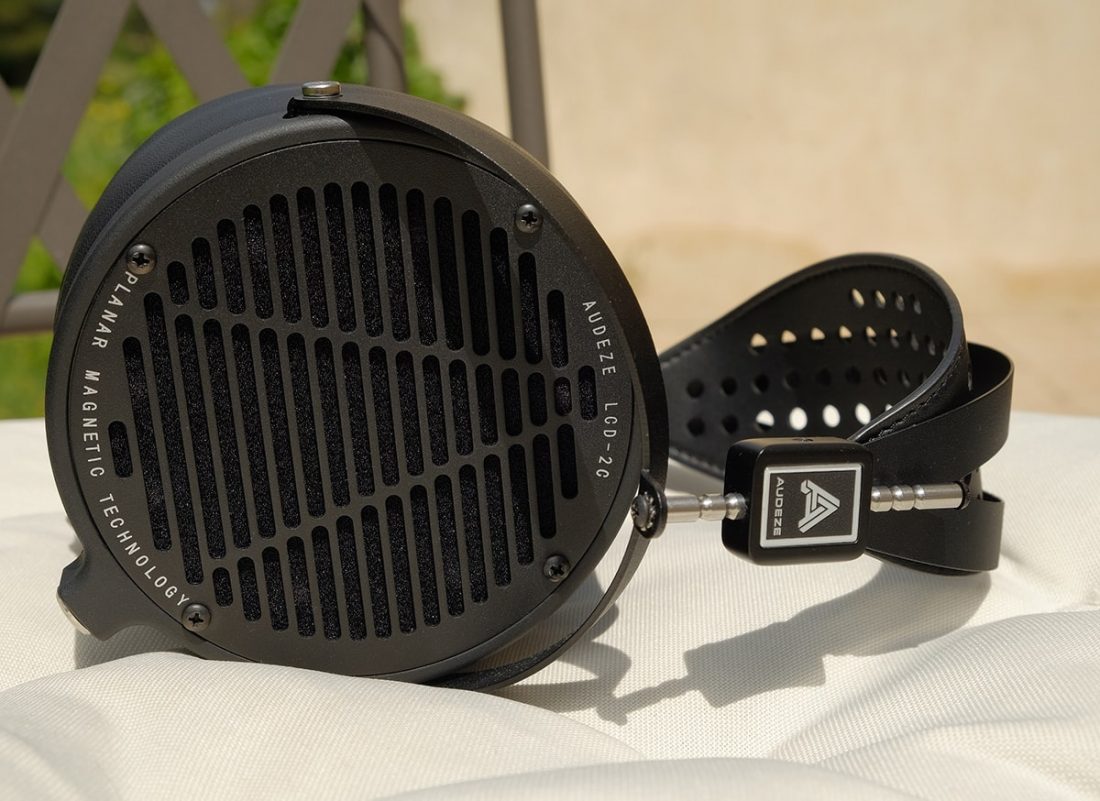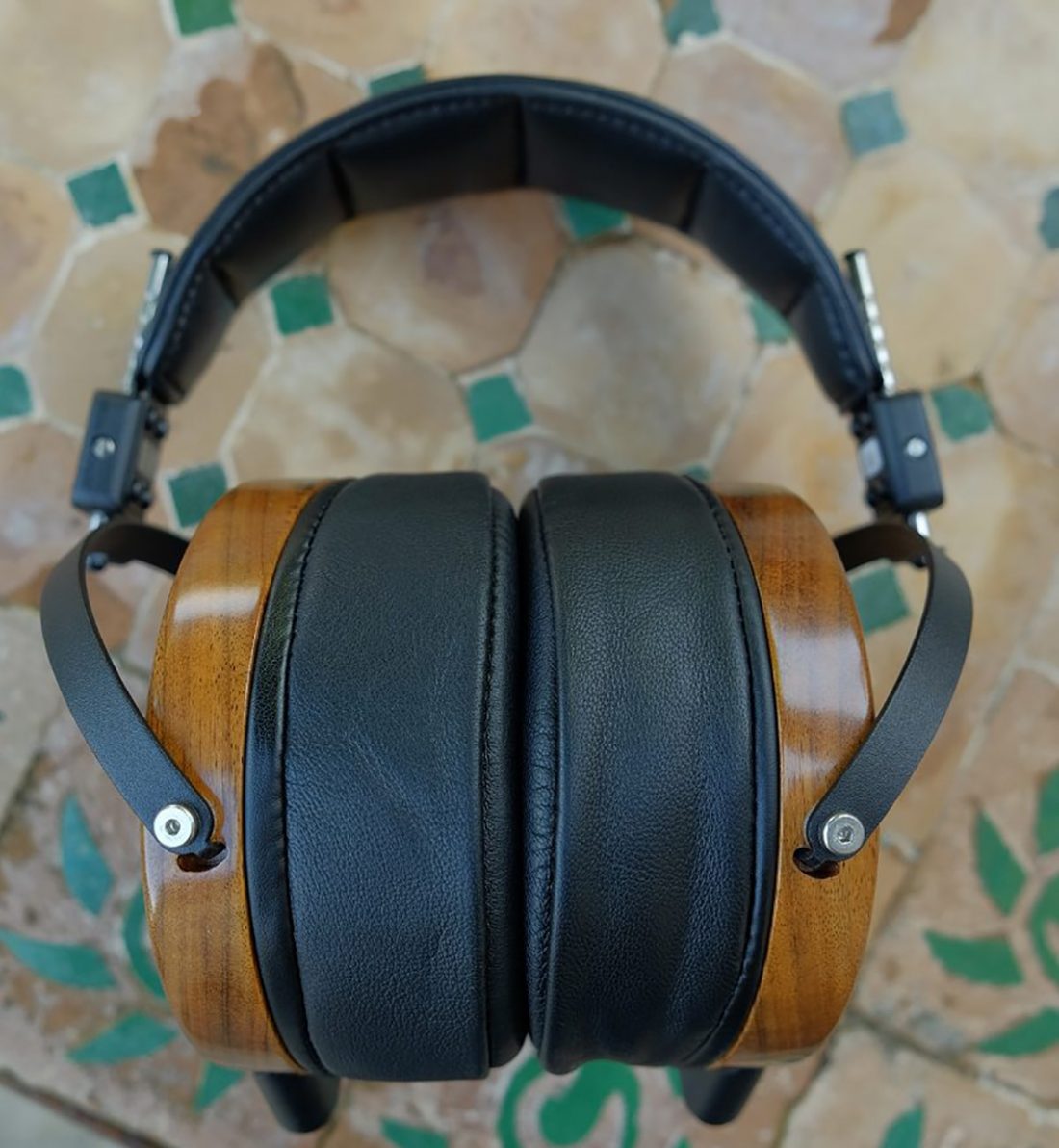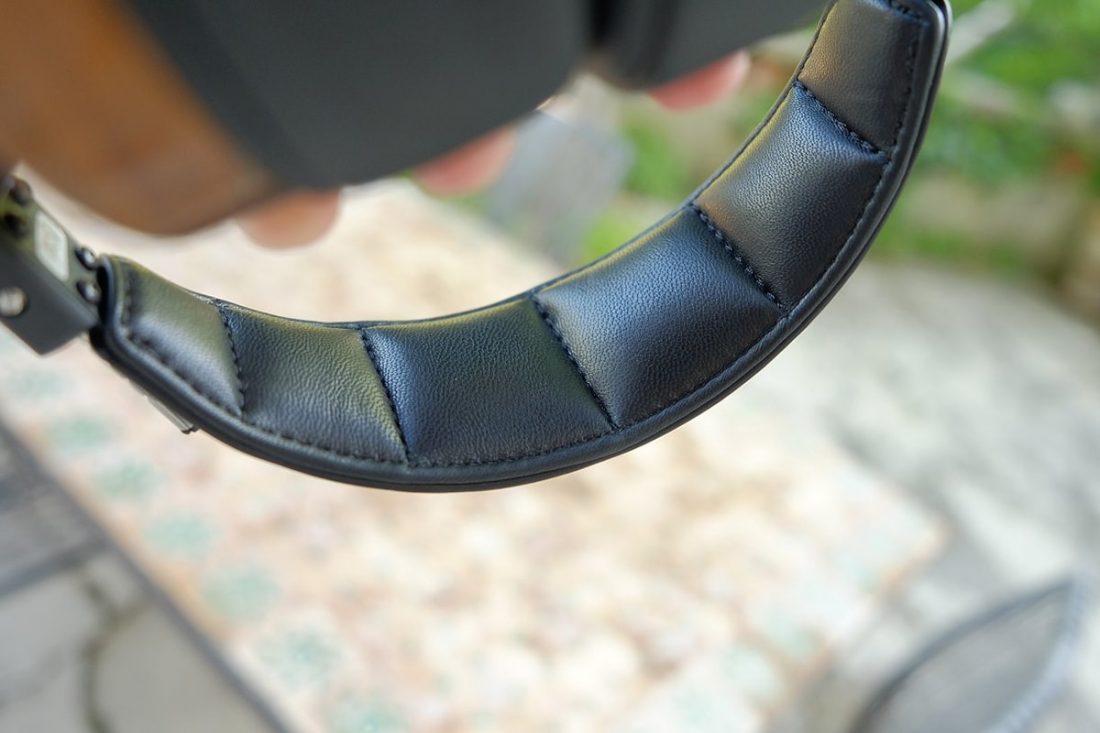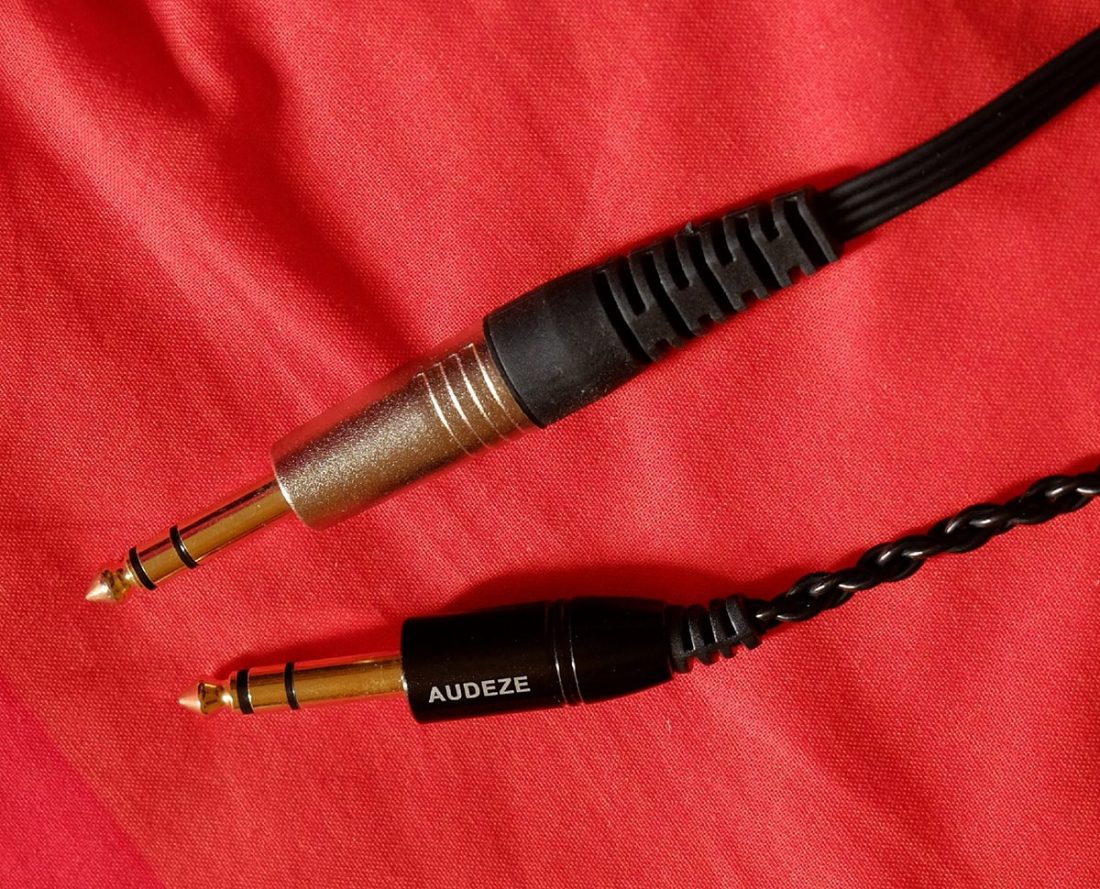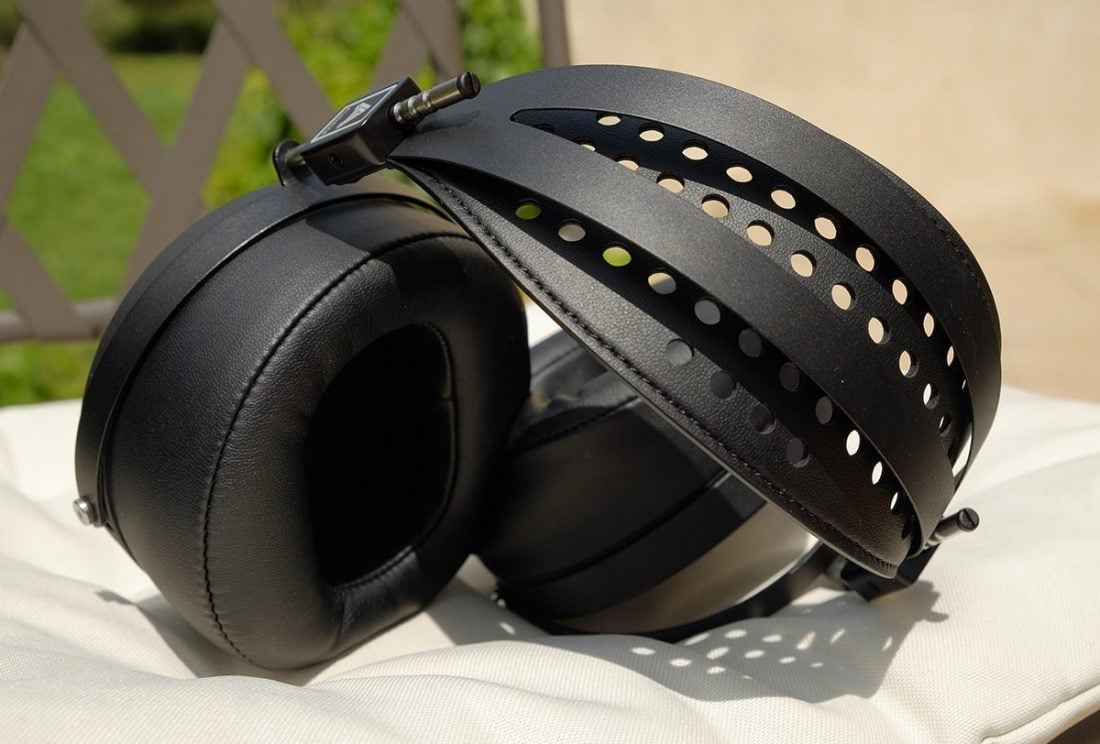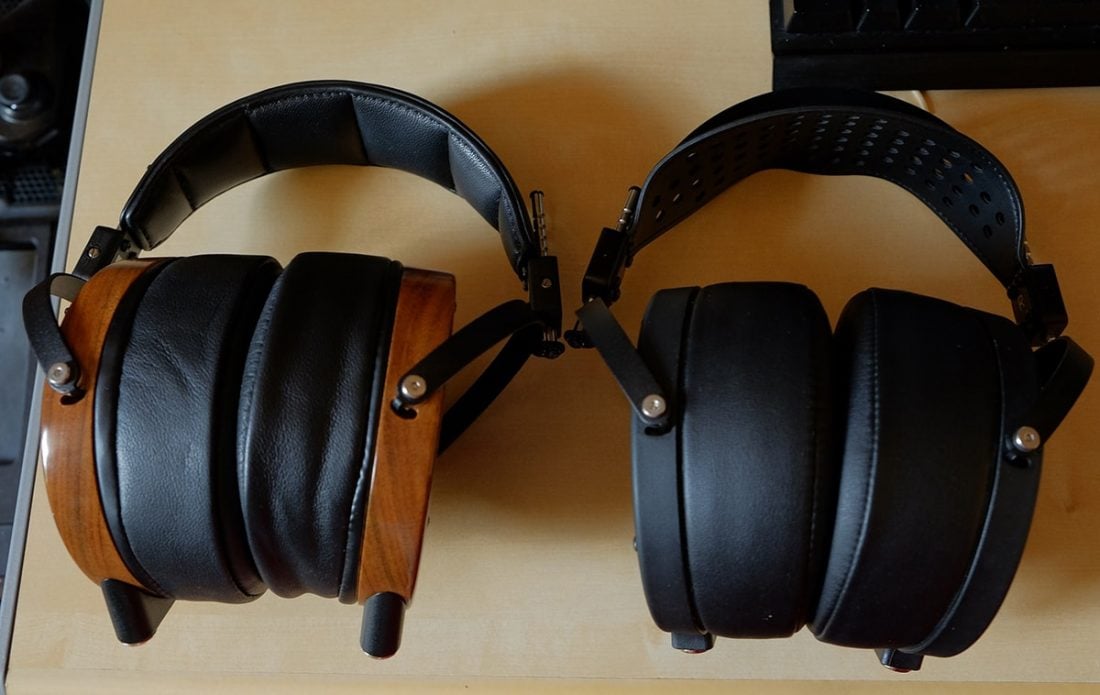Audeze LCD-2 Classic
Audeze LCD-2 Fazor (2017)
Solid Packaging
The LCD-2F comes with a 3 m long ribbon cable, which ends in a massive 6.35 mm plug, whereas the LCD-2 Classic has a 2 m braided cable; I like both. The Fazor comes housed in an impressive military-style case, which protects the headphones from any external damage. Other provided accessories are a 6.35-to-3.5-mm adaptor and manuals. Cleaning kits were included in older models of LCD-2, but removed a few years ago; not the best move for a $1000 product though! Big disappointment for the Classic: There is no storage case and no other accessories, except an Audeze member card and a USB key containing the user manual. I think it is a bit too light, even considering the fair price of $599.
Build And Style
Material
The LCD-2C is the industrial-looking variant while the LCD-2F is the more premium as well as fancier set. They both have a very similar shape inherent to all LCDs models from Audeze. The Classic has a different headband construction; made of black spring steel and synthetic leather head-strap for the head. The yokes are also built with spring steel; the wood of the Fazor models have been replaced by black nylon rings. The LCD-2F has lambskin leather ear pads and headband, as opposed to the leather ear pads of the Classic (which are memory foam and very soft). I tend to prefer the look of the Fazor just a bit better, but the LCD-2 Classic is still a nicely made product. Replacement ear pads cost $100 for a pair.
Durability
The Classic feels sturdier in the hands than the wooden Fazor; no contest! Any pair of headphones made of wood present a risk of cracking with time and the LCD-2F is no exception. Also the mini-XLR plugs of the Classic seem more robust when plugged into the housing connectors. Ear pads on both are glued with some adhesive, so it is a bit tough to remove as well as replace them. Audeze had drivers’ reliability issues in the past, but I hope their new lines of LCDs will last longer.
Comfort
These two headphones are heavy planar models and ultimately I feel something on the head, whether it creates discomfort or not. The Classic has the advantage here.
Ear Pads
The ear pads of the Classic are much thicker than the Fazor, by around 0.7 cm. The LCD-2C has actually the thickest ear pads I’ve measured till date; the rear of the cushions is 4.2 cm thick. As a result, comfort is very good but I have a bit more pressure around the ears when compared to the Fazor. Also the LCD-2F’s leather pads are softer and make my ears sweat less over time.
Headband And Weight Distribution
At first, I thought that the weight of the LCD-2C would be significantly less than LCD-2F. Eventually, there is only a difference of 40g between the two. The Fazor, in its Shedua variant, weighs around 580g. The Bamboo Fazor are probably a bit lighter, whereas the Rosewood versions are close to 600g. The Classic weigh 540g. This is still a very heavy pair of headphones, like most Audeze – ZMF or Kennerton. Hopefully, the Classic distributes this mass better; thanks to its suspension headband coming in contact with the top of the head. The Fazor has the old style headband with an average padding and it creates hotspots on my skull in less than one hour of use. (Since 2018, all manufactured LCD-2F, LCD-3F and LCD-X come with the new suspension headband instead of the old style leather one).
Sound Comparison
Both the above-mentioned headphones have a different timbre, but they are overall close in detail-retrieval, resolution and stereo image.
Bass
The LCD-2F presents a linear bass with a deep extension down to 10hz. Extremely tight and precise! I was a bit disappointed to notice how neutral the midbass impact was when I first heard these. The LCD2-F are not for basshead, but I’m not sure they could even satisfy people looking for above average impact, despite the superb extension. To my surprise, the LCD-2C is extremely similar to the Fazor version. I initially thought ‘let’s see if Classic will have more punch than the Fazor.’ Well, they don’t! I have listened to several bassy tracks with both headphones and just cannot feel any difference (even 1 dB) in impact from one version to another. It is still of course an extremely high quality bass with incredible extension, as also texture.
Midrange
The midrange of the Fazor sounds full and I don’t notice any big lack of presence in the upper midrange (1 to 3khz). There is an overall presence and richness, making them lively without having noticeable peaks. However, you will not have the forwardness of vocals found on mid-centric headphones. Very different than the Fazor, the Classic has a midrange that sounds a bit more distant, with only the lower-midrange being as present as the LCD2-F. Male vocals are accurate and rich enough; female are in the background of the scene. The difference in upper-midrange recession is very noticeable with the Fazor. Overall, the Fazor has a better integrated presence/clarity region. The LCD-2C is very coloured and sounds laid-back as well as smooth.
Treble
There is a pleasant treble on the Fazor, which does not seem much recessed to me. Enough air above 10 khz and decent level of lower-treble (I hate too recessed or too forward 5-8 khz region). The treble on the Fazor prevent them from sounding too warm or lacking excitement. With the Classic, the lower-treble is more recessed, like a continuity of the recessed upper-midrange. I’m fine with its treble; too forward would have drowned the midrange a bit more. Some people say the treble is rough; I may be not sensitive enough to hear a grainy treble that could bother me during long listening sessions.
Dynamics And Soundstage
I feel Fazor has a sound similar to the Sennheiser HD650: rather average (in width), but with great coherence. The Classic is extremely close to the LCD-2F regarding soundstage. Both have good, but not impressive sense of imaging; the LCD-2C is more performing here, I guess because of its laid-back nature. Instruments’ localization on the stage seem better on the Classic, along with excellent depth. Like a lot of highly priced headphones, I’m a bit disappointed to see that both Audeze are not any better than some « mid-fi » models when it comes to dynamics and resolution. To my ears, a well-amped HD600 is very close in technicalities to the LCD-2F or LCD-2C. In that regard, a Sennheiser HD800 or a Focal Clear are at another level.
Final Word
Audeze made a good move by proposing an alternative to its current line of Fazored LCD. I see the LCD-2F as a balanced all-rounder with a touch of warmth, whereas the LCD-2C is the laid-back and smoother variant. The difference in the clarity/presence region (1-5 khz) is where they differ the most. The LCD-2C was initially sold at $599, and while it is still a high price for headphones, it becomes more interesting than the LCD-2F. The Classic is now sold at $799 but used models can be found for $600, similar to the Fazor. It then just comes down to personal preferences, without forgetting the difference in comfort and headband.
